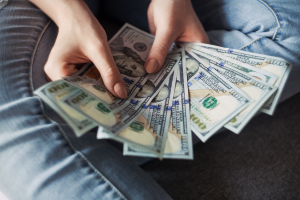S&P 500: 0.39% DOW: 0.34% NASDAQ: 0.14% 10-YR: 3.75%

Last Week on WallStreet - June 10th, 2023
What Happened?
The S&P 500 held above the key resistance level of 4,200 to finish off its fourth straight week of gains. In a sight not quite seen this year, breadth across the stock market improved as mid- and small-cap names added to this week's step higher. Overall, it was a quiet week on Wall Street as investors prepare for what is to be a noisy, volatile upcoming week for markets. CPI data is set to release on Tuesday before the highly anticipated FOMC rate decision on Wednesday. The futures market is currently pricing an over 70% chance that the Fed will leave rates as they stand, allowing more time to observe the effect of this hiking cycle on the economy. In either case, Jerome Powell's language and tone at his press conference will be key in the ultimate direction for stocks.
Beneath the surface, all but two sectors capped off the week with gains. Leading the pack was Consumer Discretionary (2.7%), followed by Utilities (1.9%) and Energy (1.8%) names who experienced some relief after many weeks of underperformance. The laggards this week were Staples (-0.7%) and Technology (-0.5%) which took a breath after its intense rally.
US Jobless Claims Leap to Nearly Two-Year High of 261,000
- The number of people who applied for U.S. unemployment benefits in early June jumped to 261,000
- The highest level since October 2021
- Of the 53 U.S. states and territories, 27 showed an increase last week. The other 26 posted a decline
- The number of people collecting unemployment benefits in the U.S., meanwhile, fell by 37,000 to 1.76 million
The key takeaway - While one reading is too little to make any broad determinations, the intense spike in jobless claims provides a data point supporting the opinion that labor may be in the early stages of softening. The natural consequence of the report for markets is that this reading may provide another straw on the Federal Reserve's back and push them to pause hiking rates at next week's meeting. Given the current conglomeration of data, many expect the Fed to wait and see if continued evidence of economic deterioration, including employment data and inflation weakness appears.
US Services Sector Softens, Factory Orders Boosted By Defense
- The ISM Services PMI fell last month to 50.3 from 51.9 in April
- Economists were expecting an increase to 52.2
- A measure of new orders received by services businesses fell to 52.9 last month from 56.1
- Prices paid by services businesses for inputs dropped to 56.2, the lowest level since May 2020
- Services sector employment declined in May
The key takeaway - The services sector has provided a primary pillar of support in this year's economy as consumers continue to spend their dollars at these businesses post-pandemic. Many expect the economy to slow and deterioration in services spending would be a likely requirement for any sort of recessionary environment. This report combines with other data points indicating the largest segment of our economy is cooling and the slowdown investors have had their eyes on for the past year may finally be in the headlights. The good news is, demand, prices, and employment softening in this report are positive for the inflation battle.
US Consumer-Credit Growth Accelerates in April to Fastest Pace in Five Months
- Total consumer credit rose $23 billion in April, translating to a 5.71% growth annual rate
- Economists were expecting a $21.6 billion increase
- Revolving credit, i.e. credit cards, rose 13.2% during the month
- Nonrevolving credit, such as car and student loans, grew 3.2%
- This data does not include the largest category of household debt: mortgage lending
The key takeaway - Since the covid-era fiscal stimulus was injected into the economy and household balance sheets, we have observed a distinct cycle in how consumers are spending. A robust buildup of savings grew during the pandemic and, as the world began opening up, Americans steadily drew down those funds. We've now seen those surpluses wane but consumption remains steady. Consumers are now using credit to fund purchases and debt balances have risen so far this year. The concern lies in higher interest rates making it much more difficult to repay these credit lines and therefore increasing default risk. If that dynamic materializes as the economy slows down, it could deepen the pain felt by consumers.

From the Waterloo Watercooler
GM CEO Mary Barra said that her company’s electric vehicles will be able to plug into Tesla’s lightning-fast Supercharger network starting next year
Uber is taking on Turo with a peer-to-peer car-sharing service that will launch soon in North America
After firing ex-Amazon exec Matt Furlong, GameStop named Ryan Cohen, the billionaire investor who has championed the company, its executive chair
The PGA Tour and its rival, LIV Golf, announced a shocking deal Tuesday to “unify the game of golf.”



